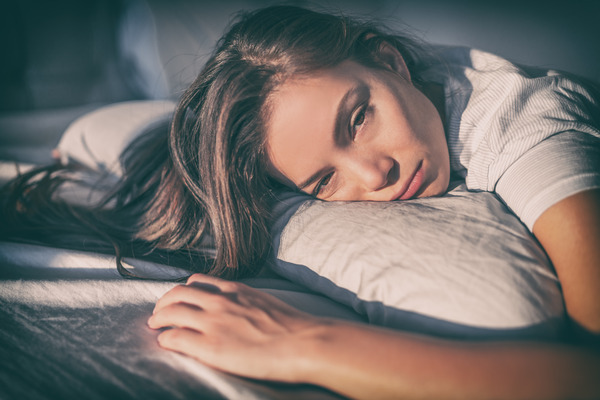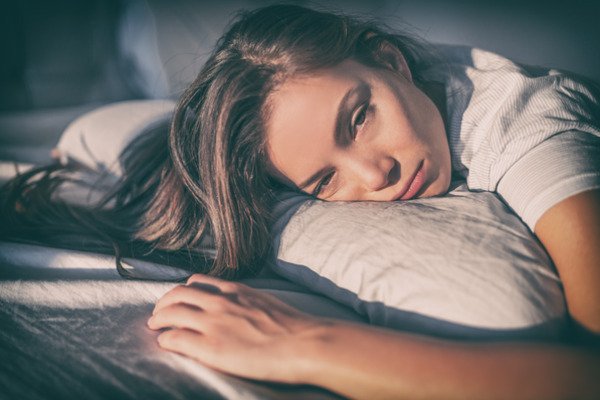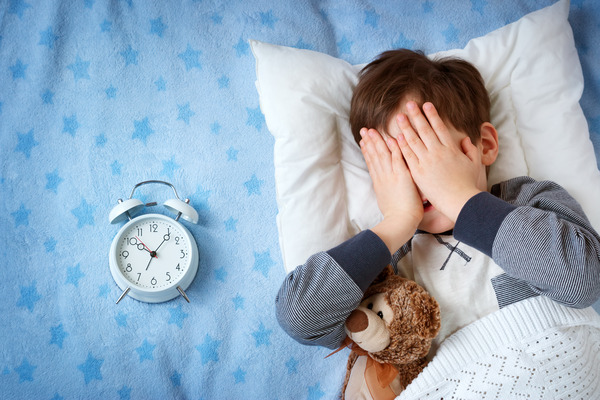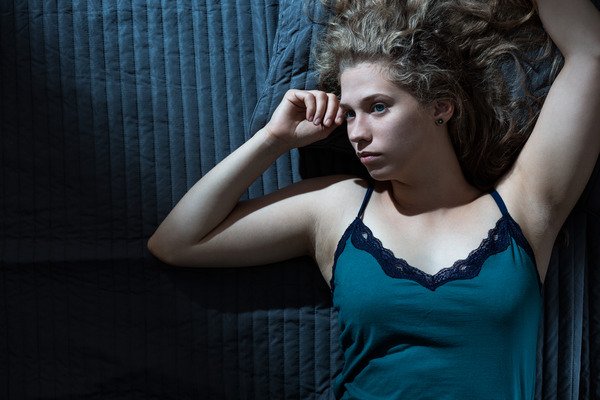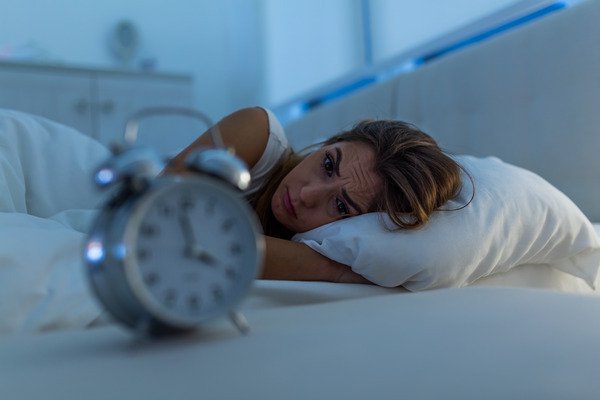How to relax to sleep? Are there exercises to fall asleep faster? Discover the best relaxation techniques to fall asleep quickly and achieve a more restful sleep.

The relaxation techniques for sleeping They help you get rid of everyday stress and fall asleep in a peaceful and pleasant way. Everyday life involves us in a frenetic rhythm in which we sometimes find it difficult to manage moments of stress, which influence us when we go to bed.
The accumulated tension and lack of sleep cause our body to suffer and our emotional state to worsen, even with consequences for learning, concentration, and personal and professional relationships. These latter effects caught the attention of the Society for Industrial and Organizational Psychology (SIOP), which published a report in 2018 analyzing the lack of quality sleep in the workplace Sick, unsafe, and unproductive: Poor employee sleep is bad for business reflects the costs to companies of their employees having insomnia. The study places special emphasis on the mood and performance of workers, which decreases the worse they sleep.
Sleeping well, a priority
To rest well It must be a priority in our physical and emotional health since not doing so affects all areas of our lives. To do this, in addition to having good sleep hygiene, you can practice simple relaxation techniques for sleep and mental games which can be an ideal solution to prevent insomnia from taking over our lives. It is completely normal to suffer from occasional insomnia, for which these methods can help.
However, for cases of habitual insomnia due to psychological causes such as stress, anxiety or depression, it is necessary to go to professionals who with psychological therapies specialized in insomnia who will look for the appropriate solution for each case. Achieve the long-awaited relaxation to sleep deeply it is possible.
- To discover more ways to combat sleep problems: How to combat insomnia and other sleep disorders
How to relax to sleep? Exercises to fall asleep quickly
If what you are interested in is learning to sleep quickly, there are a series of relaxation exercises for sleeping that can help you fall asleep. In fact, these are tricks that science has proven to be effective.
The military method
This relaxation is a method that was used in the United States Army to help its pilots fall asleep in two minutes or less. To do this, you must follow the following instructions:
- Relax your entire face, including the muscles inside your mouth
- Drop your shoulders to release tension and place your hands next to your body.
- Exhale, relaxing your chest
- Relax your legs and muscles
- Clear your mind for ten seconds by imagining a relaxing scene
- If this doesn’t work, try saying the words ‘don’t think’ over and over again for ten seconds.
4-7-8 Breathing Method
By combining meditation and visualization, one of these exercises to fall asleep quickly emerges. This breathing method becomes increasingly effective if practiced routinely. To do this, you must follow the following instructions:
- Let your lips part slightly and make a whistling sound as you exhale through your mouth.
- Close your lips and inhale silently through your nose while counting to four in your head.
- Then hold your breath for seven seconds.
- Then exhale for eight seconds.
- Avoid being too alert at the end of each cycle, that is, try to practice it without thinking.
With these two exercises to sleep well You will be able to fall asleep quickly. Even so, if you want to sleep better, we recommend that you do different relaxation techniques.
10 Relaxation Techniques to Sleep Better
Before explaining how to get relaxation to sleep, it is necessary to stop at the so-called sleep hygiene, what is it about? According to a publication of the Spanish Sleep Society in the Journal of Neurology, sleep hygiene is a group of behaviors that must be carried out during the day and a series of environmental recommendations to follow that have the objective of achieving healthy sleep. This method was originally intended for the treatment of mild to moderate insomnia, although its practice is advisable for the entire population. It could be summarized like this:
“Through sleep hygiene, patients learn about healthy sleep habits and are encouraged to follow a series of recommendations to improve sleep (for example, avoiding caffeine, exercising regularly, eliminating noise from the sleeping environment, and maintaining a regular sleep schedule).”
Once the best context for falling asleep has been created – sitting or lying down, comfortable clothing, silence – it is time to apply the relaxation techniques for sleeping taking into account some considerations:
- It should be noted that not all exercises work for all people and that it is necessary to test which one best suits our needs.
- Don’t focus on rushing to sleep as it will cause more anxiety. Focusing on exercise with concentration will cause distraction leading to sleep.
- It is appropriate to practice relaxation exercises for sleeping every day half an hour before going to bed so that we get used to it and can perfect the technique so that it is easier for us to carry it out and with better results.
1. Practice breathing
One of the relaxation techniques for sleeping And to combat stress, the simplest and most practicable for everyone is breathing. We usually do not think of it as a way to balance ourselves and we usually breathe quickly, raggedly, through our mouth and in a superficial manner. Even when we pretend to sleep, we don’t pay attention to how we breathe. With the breathing exercises, we will be able to put conscious focus on the way we do it and we will relax little by little. Let’s see how to breathe step by step.
- First of all, we place ourselves in a place alone where no one will disturb us, in silence and with comfortable clothes.
- We choose a position in which we are comfortable. If we are already in bed, we stand with our back straight and without crossing our arms or legs.
- We inhale and exhale through the nose, listening and feeling how the air enters and leaves the body, focusing on the abdomen so that the breath is deeper than when we simply notice it in the chest.
- We inhale and exhale longer and longer, counting mentally and holding them as long as possible in a progressive manner.

With these relaxation exercises for sleep focused on breathing you experience how the nervous system relaxes.
2. Relaxation for sleep with visualization
One of the best relaxation techniques for sleeping is guided imagination Relaxation exercises through image visualization are a resource that we carry out almost without realizing it throughout the day. Many times our mind takes us to negative situations that most of the time will never happen but other times it transports us to places where we have been happy or where we would like to be.
Well, this relaxation technique through guided imagination consists of the second option: mentally visualizing scenes, emotions and physical sensations that give us peace and tranquility. Placed in bed or in a relaxed place, lying down and with our eyes closed, we will be able to transport ourselves to that scene while being completely receptive to all the stimuli.
With background music or a sound that takes us to a pleasant place, such as the waves of the sea or the rain behind the glass, for example, it is about imagining a place in detail and capturing it with all the senses. From how it smells to what you hear or what sensations it transmits, trying to move through the scene slowly and with maximum attention to any emotion. Always, of course, performing the appropriate and calm breathing that we have discussed in the previous relaxation exercise.
Likewise, there are many examples of guided imagination on the Internet, in which through instructions our body is induced to achieve calm and serenity and forget about those stress points that allow us to fall asleep. We just have to find the one we like the most and regularly practice these. relaxation exercises for sleeping as a training to notice all its benefits.
3. Body scan to sleep better
When you suffer from occasional insomnia caused by stress, there are some relaxation techniques for sleeping that can be really quick and effective. One of them is the body scan. This exercise that is applied in mindfulness It is easy and achieves good results when it comes to avoiding ruminative thoughts when going to bed.
After having followed all the routines that entail good sleep hygiene and once in bed minutes before getting ready to sleep, we mentally scan our entire body. This consists of putting all our attention on each part of the body, perceiving how we feel it in maximum detail. In order to carry out these exercises to sleep well we must follow the following steps:
- We will start with the toes of the left foot and continue through the sole, heel, calf, etc. until you reach the left hip.
- We will go down again to continue on the right foot and exactly the same as the previous one. Also paying attention to the bones and muscles.
- We will continue through the pelvis to the abdomen, the chest and reaching the shoulders. Here we will stop at internal organs such as the lungs or the heart.
- We will have the arms left, reaching the hands and then going up to the neck, face and head.
The body scan should be done exclusively mentally and without moving. The state of relaxation will be such that it is likely that with this exercise we will fall asleep in the first steps.
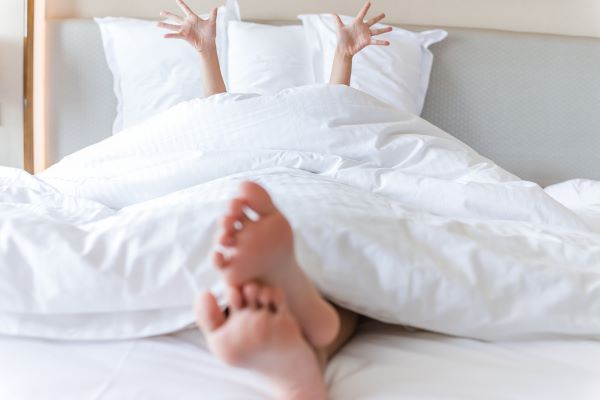
4. Countdown as a mental game to sleep
Along with the body scan, another of the mental games for sleeping and perhaps one of the best known is the countdown. It involves once in a position to fall asleep and with your eyes closed and a relaxed position, choose a high number and count slowly and mentally until you reach zero, visualizing the numbers with their silhouettes. For example, you can start with the number 100 and go down through the numbers imagining them in relief, with colors, shapes and movement.
A variable of this method to fight insomnia is to count the numbers while we imagine that we are going down a staircase and feeling all our movement. The counting can be accompanied with breathing exercises to make it more complete.
One of the relaxation techniques for sleeping that help avoid recurring thoughts and they are very useful for falling asleep.
5. Relaxation techniques for sleeping: Chi Kung
Chi Kung (or Qi Gong) are different traditional chinese medicine techniques which aim at the circulation of vital energy through the guidance of breathing, mind and physical exercise. Among the numerous relaxation techniques that this method contains, there are some designed to free us from the mental stress accumulated during the day that prevents us from falling asleep.
One of these relaxation exercises for sleeping is the call The Phoenix Bird opens its wings which is done standing with the legs parallel and slightly separated and the arms straight away from the trunk and the head facing

